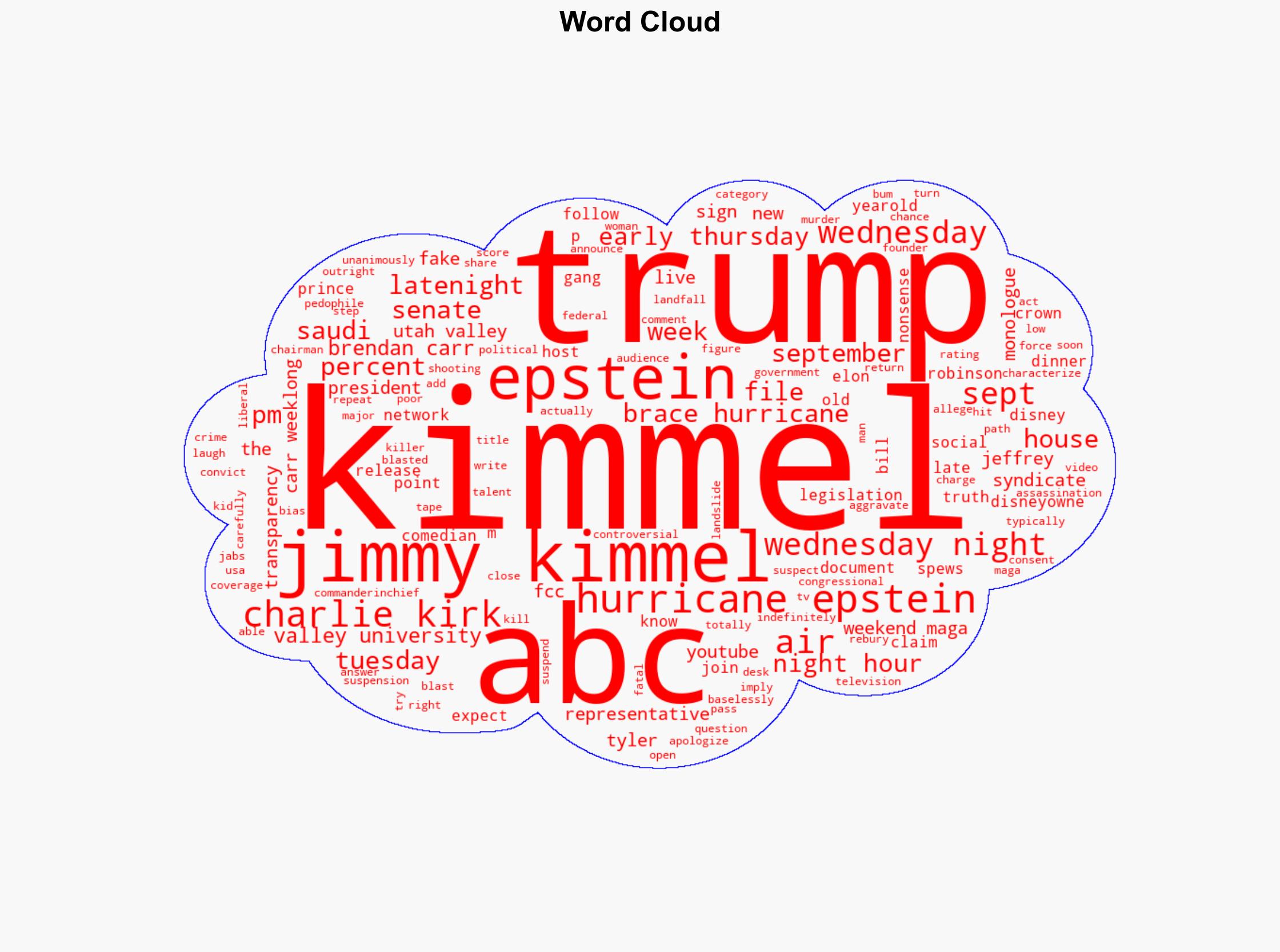Trump blasts Jimmy Kimmel ABC after late-night host claims president is bracing for Hurricane Epstein – New York Post
Published on: 2025-11-20
AI-powered OSINT brief from verified open sources. Automated NLP signal extraction with human verification. See our Methodology and Why WorldWideWatchers.
Intelligence Report:
1. BLUF (Bottom Line Up Front)
With a moderate confidence level, the most supported hypothesis is that the exchange between President Trump and Jimmy Kimmel is primarily a media-driven spectacle with limited substantive impact on political or national security matters. Recommended action includes monitoring for potential escalation in rhetoric that could influence public opinion or political actions.
2. Competing Hypotheses
Hypothesis 1: The conflict between Trump and Kimmel is primarily a media-driven spectacle aimed at increasing viewership and engagement for both parties. This hypothesis is supported by the timing of Kimmel’s comments and the subsequent media coverage, suggesting a cycle of provocation and response that benefits both parties in terms of media exposure.
Hypothesis 2: The exchange is a strategic move by Trump to divert attention from more pressing issues, such as the Epstein Files Transparency Act. This hypothesis considers the timing of Trump’s response and the potential for using media distractions to shift public focus away from legislative actions.
The first hypothesis is more likely due to the pattern of similar media interactions in the past and the lack of direct evidence linking the exchange to strategic diversion tactics.
3. Key Assumptions and Red Flags
Assumptions: It is assumed that both Trump and Kimmel are aware of the media dynamics and are using the exchange to their advantage. Additionally, it is assumed that the audience is primarily engaged for entertainment rather than substantive political discourse.
Red Flags: The potential for misinformation or biased reporting is high, given the charged nature of the exchange and the involvement of media outlets with known biases.
Deception Indicators: The lack of concrete evidence linking the exchange to strategic political maneuvers suggests a potential for misdirection or exaggeration in media narratives.
4. Implications and Strategic Risks
The primary risk is the potential for increased polarization and misinformation among the public, which could exacerbate existing political divisions. There is also a risk that continued media focus on such exchanges could detract from more substantive policy discussions and legislative actions.
Escalation scenarios include increased rhetoric leading to further media cycles, potentially influencing public opinion and political actions, particularly in the context of upcoming elections or legislative debates.
5. Recommendations and Outlook
- Actionable Steps: Monitor media narratives for shifts in focus or escalation in rhetoric. Engage in public communication strategies to clarify legislative actions and counter misinformation.
- Best Scenario: The exchange remains a contained media event with limited impact on public opinion or political actions.
- Worst Scenario: Escalation in rhetoric leads to increased polarization and distracts from critical policy discussions.
- Most-likely Scenario: The exchange will continue to be a media spectacle with periodic spikes in attention but limited long-term impact.
6. Key Individuals and Entities
Donald Trump, Jimmy Kimmel, Jeffrey Epstein, Charlie Kirk, Tyler Robinson, Brendan Carr.
7. Thematic Tags
National Security Threats, Media Influence, Political Polarization, Public Opinion, Legislative Impact
Structured Analytic Techniques Applied
- Cognitive Bias Stress Test: Structured challenge to expose and correct biases.
- Bayesian Scenario Modeling: Use probabilistic forecasting for conflict trajectories or escalation likelihood.
- Network Influence Mapping: Map influence relationships to assess actor impact.
Explore more:
National Security Threats Briefs ·
Daily Summary ·
Support us





